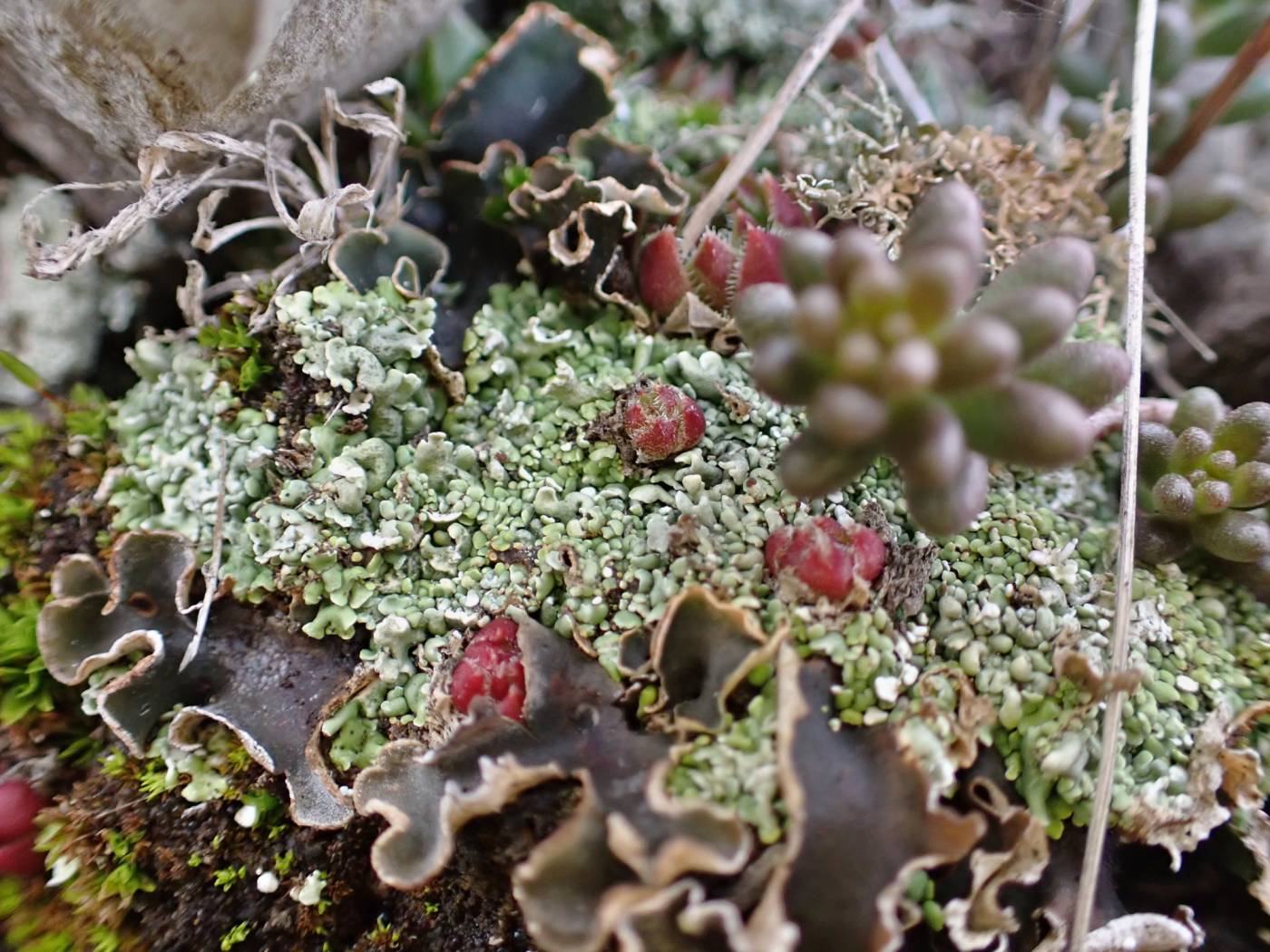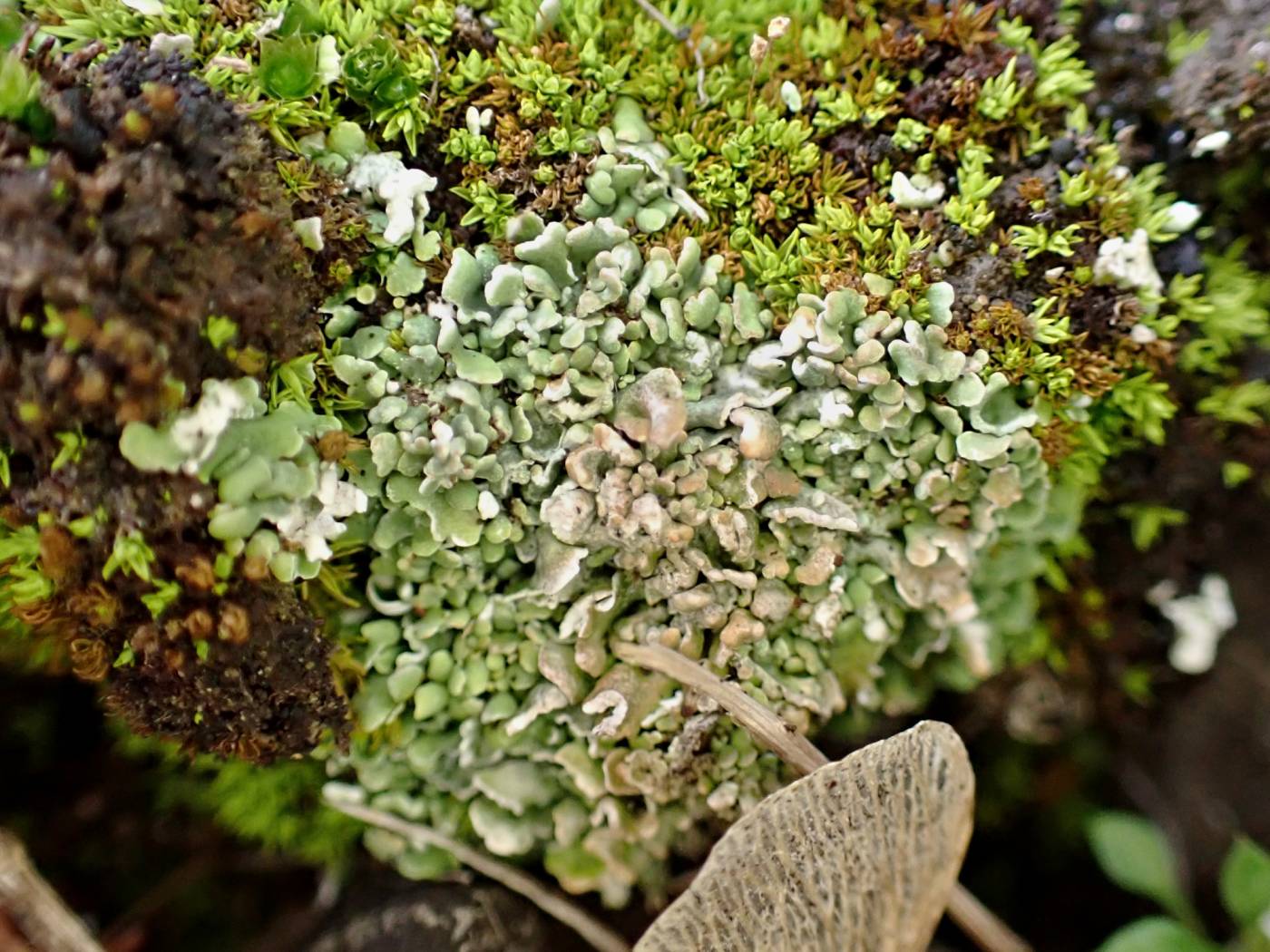A smaller Cladonia species with small rounded thick and convex squamules, on which podetia are formed. These are low (up to 1 cm), simple to slightly branched, often cracked and with wide apothecia on the top. It is ecologically and morphologically similar to C. cariosa, which is generally larger and has podetia and squamules of a different shape when well-developed. However, it might be similar to C. peziziformis when underdeveloped. Both species often form pycnidia on the primary squamules. They are reliably distinguished based on secondary metabolites. Atranorin is always present in C. cariosa but absent from C. peziziformis, which contains fumarprotocetraric acid and sometimes also the terpenoid ursolic acid.
Cladonia peziziformis is a typical pioneer species on disturbed soil in both natural and anthropogenic habitats. For example, its first record in Bohemia in 1908 is from a sandstone quarry in the Chrudim region (Kuťák 1910). About a fourth of its recent records are from anthropogenic stands (Malíček et al. 2011). It seems to prefer slightly calcareous soil on siliceous bedrock. In Europe, the species is rarely recorded but is probably largely overlooked as it often only forms primary squamules. In the Czech Republic, it most commonly occurs on sandbanks and around rock outcrops or directly on small soil patches within them. Černohorský et al. (1956) considered it scattered in former Czechoslovakia from lowlands to mountains. However, localized records from the last century are only from a limited number of localities at lower elevations, mostly by J. Suza in southern Moravia (see the catalogue by Vězda & Liška 1999). Recently, it mostly occurs in warmer areas of central Bohemia, most frequently on diabases in Prague and Český kras (the Bohemian Karst). Because of its pioneer life strategy and overall inconspicuousness, it is not clear whether the lichen is overlooked or declined during the 20th century, e.g., in Moravia.
Literature: Kuťák V. (1910): První příspěvek ku květeně českých lišejníků. – Věstník Klubu přírodovědného v Prostějově 12 [1909]: 179–202. Malíček J., Bouda F., Kocourková J., Palice Z. & Peksa O. (2011): Zajímavé nálezy vzácných a přehlížených dutohlávek v České republice. – Bryonora 48: 34–50. Černohorský Z., Nádvorník J. & Servít M. (1956): Klíč k určování lišejníků ČSR. I. díl. – Nakladatelství ČSAV, Praha.
taxonomic classification:Ascomycota → Lecanoromycetes → Lecanorales → Cladoniaceae → Cladonia
Red List (Liška & Palice 2010):EN – endangered
Red List (Malíček 2023):C3 – endangered
Occurrence in the Czech Republic
All records: 41, confirmed 39. One click on a selected square displays particular record(s), including their source(s).

